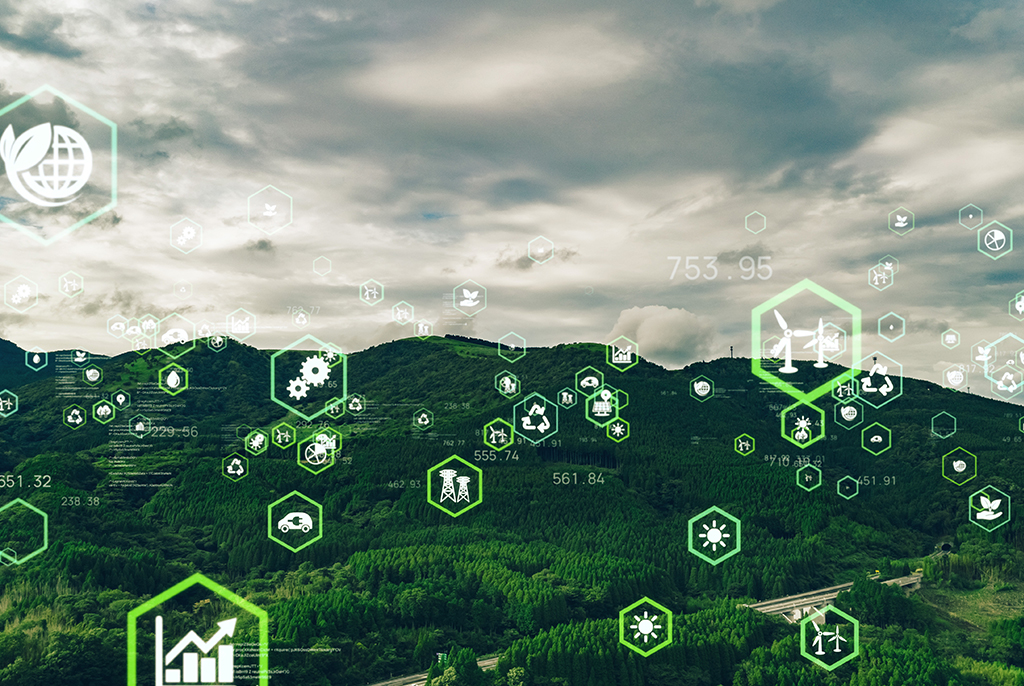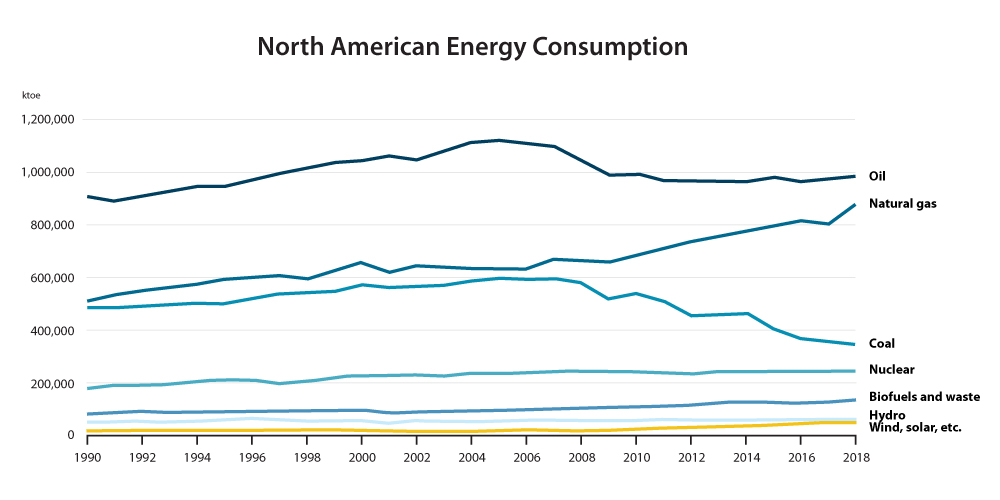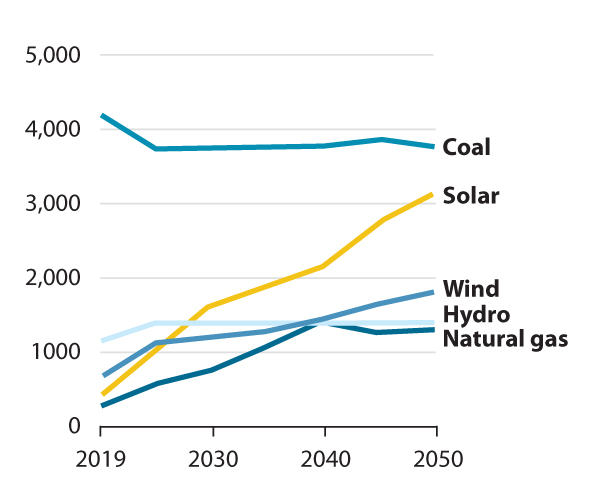Ecological trends facing business in 2021 and beyond

Editor’s Note: This article is part of a series on external trends impacting small and midsize businesses in 2021. In Part 1, we study ecological trends in business.
Heading into 2020, a study conducted by the pro-business World Economic Forum (WEF) cited infectious disease and weather change as among the most significant risks facing businesses today. In their risk assessment, the WEF noted that the near-term consequences of climate change were resulting in a “planetary emergency.”
While countries were in lockdown during the spring, energy consumption was down roughly 25%, and global CO2 emissions down 8%.1 As our economies reboot, business leaders are contemplating their responsibilities for participating in sustainable capitalism and investment in a resilient energy infrastructure. Public companies are publishing their carbon emission goals and demanding that their downstream supply chain partners do the same.
Our inability to stem rising temperatures could have devastating economic impact. For example, the wildfires in the Western U.S. are expected to have an economic impact of over $150 billion.
Other 2021 trends
Part 2: Social trends facing business in 2021 and beyond
Part 3: Technology trends facing business in 2021 and beyond
Part 4: Economic trends facing business in 2021 and beyond
The Paris Agreement and global impact of climate change
President Elect Biden has pledged sweeping reforms to current environmental policy and reaffirmation of the Paris Accord. The Agreement has been signed by 193 nations. Its overarching objective is to slow global warming to two degrees Celsius by 2040. It is a tall order.
Various models suggest that even if greenhouse gas emission were immediately eliminated, the average global temperature would rise by 0.5 degrees Celsius. Gases release into our atmosphere very slowly.
Scientists have long pointed to devastating impacts including changing rates of precipitation, rising sea levels, severe weather and changes to the carbon life cycle.2 Even more alarming changes are conceivable, such as monsoons, water shortages, releases of methane, the collapse of major ice sheets in Greenland and Antarctica, and slower absorption of CO2.
The creation of “hot zones” would put large populations at risk. For context, a 10 to 60 meter rise in the sea level could potentially wipe out entire cities such as New York, Bangkok, Manila and Rio de Janeiro.3 There are concerns that loss of biodiversity could have all types of unintended consequences including impact to clean air, food and water. Entire classes of medicines could become unavailable.
The Forum for the Future suggests that the major economies of the world will have to cut carbon emissions by 5% per year through 2040 to achieve the target. This will have to include a multi-disciplined approach including electric cars, net positive agriculture, energy efficiency, and a 40% decrease in emissions from heavy industry.
To achieve the Paris Agreement goals would require a rebalancing of energy sources to 50% renewable energy. As a practical matter, these goals are unattainable without government intervention and cooperation from large polluters (including China).

Trends such as fast fashion and ecommerce have been unfriendly to the environment. Providers are designing their products to promote more sustainable packaging including mono-materials and recyclables meant for reuse. Plastics are being replaced with paper and bio-plastics.4
Energy sources
A recent study completed by the U.S. Energy Information Administration (EIA) reveals the stark contrast in the cost of creating electricity:

A result of the pandemic has been the rapid decline in oil demand and prices. Industrial companies are scrambling to deploy more renewable energy sources (such as hydrogen) for industrial applications. Natural gas comprises 39% of electric generating capacity, but prices have fallen sharply this year by 7%. Today, 56% of all renewable energy goes to creating electric power.5
Meanwhile, Elon Musk unveiled his vision for the $25,000 Tesla at the company’s Battery Day event in October. The company plans to sell over 20 million autonomous vehicles per year at scale. Tesla’s battery innovations include silicon replacing cobalt, dry electrodes and cathode production.6
Usage of lithium-ion batteries is expected to increase by nine times this century, driven primarily by electric car makers. The cost of lithium-ion plunged 87% between 2010 and 2019. China is currently home to 73% of lithium cell production capacity. Tesla had the biggest battery factory in the world in Sparks, Nevada, and is dramatically expanding its production capabilities.7
Solar installations will increase 33% this year. The U.S. is expected to add 113 GW of new capacity by 2025, driving the need for more energy storage, which is expected to multiply by 2025 given the large scale utility projects already in progress. In-home solar in many states now requires battery power to store energy. As states shift from gas to solar, rolling blackouts will be more problematic in states like California.8
Mining and precious metals
Today the U.S. imports 80% of “rare earth elements” from China.9 President Trump’s executive order (signed in October) identified 17 minerals critical for manufacturing missiles and munitions, hypersonic weapons, and radiation-hardened electronics as well as those used in cellphones.
Solar and other technologies will increase demand for cobalt and other metals such as aluminum and copper.
The order puts Biden in a bind. His staunch rhetoric against China and irresponsible practices there will be in conflict with the environmental impacts of mining these minerals on U.S. soil. National security concerns seem warranted, but time will tell if Biden has more bark than bite on China policy, and whether the U.S. will seek independence on the mining of these minerals.
Water
While threats such as natural disasters and pandemics are sudden, the global water crisis is a long-term problem with significant financial impact. It is estimated that water scarcity cost companies $38 billion in 2018. The erosion of water quality can impact production, increase costs and disrupt supply chains. Sectors with high water usage such as food production, tobacco, metals and mining are building specific water mitigation objectives into their strategic plans.
It is believed that food production will need to double by 2050 to feed the world’s population. Agriculture and deforestation represent 25% of water consumption, and crop yields are expected to drop in future years (in part because of a lack of water).10
What businesses can do to help
There are actions your company can take to protect the environment:
- Require your vendors to provide an annual report of their progress versus more sustainable practices. Often, consumption can be reduced through cooperation among vendors and customers.
- Work with your peers and competitors in trade groups and cooperatives to ensure your industry is taking bold steps to reduce impact on the environment. Cooperation in entire industries will flatten the playing field so that vendors do not have cost advantage over others.
- Seek out technologies that can improve sustainability practices.
- Educate your employees on how their decisions make an impact on the environment.
- Set clear goals for consumption and track them as KPIs (key performance indicators).
References
1IEA.org
2Center for Science Education
3<2 degrees C Futures, Forum of the Future
4Top 9 Sustainable Packaging Trends by Sophie Kieselbach, Sphera
5US Energy Information Administration
6The $25k Tesla, Bloomberg BusinessWeek, September 28, 2020
7Why China Is Dominating Lithium-Ion Battery Production by Robert Rapier, Forbes
8Kiplinger Letter Vol. 97, No. 3
9Trump executive order targets rare earth minerals and China by Gould and Mehta, Defense News
10After two lost decades, U.S.’s weakest local economies may face worse from pandemic by Howard Schneider, Reuters
Also by this author
- Trends facing business in 2022 and beyond
- The future of work in America [report]
- 9 key ways to gather and report useful KPIs
- Trends impacting business in 2020 and beyond
Category : Economic / Future Trends

